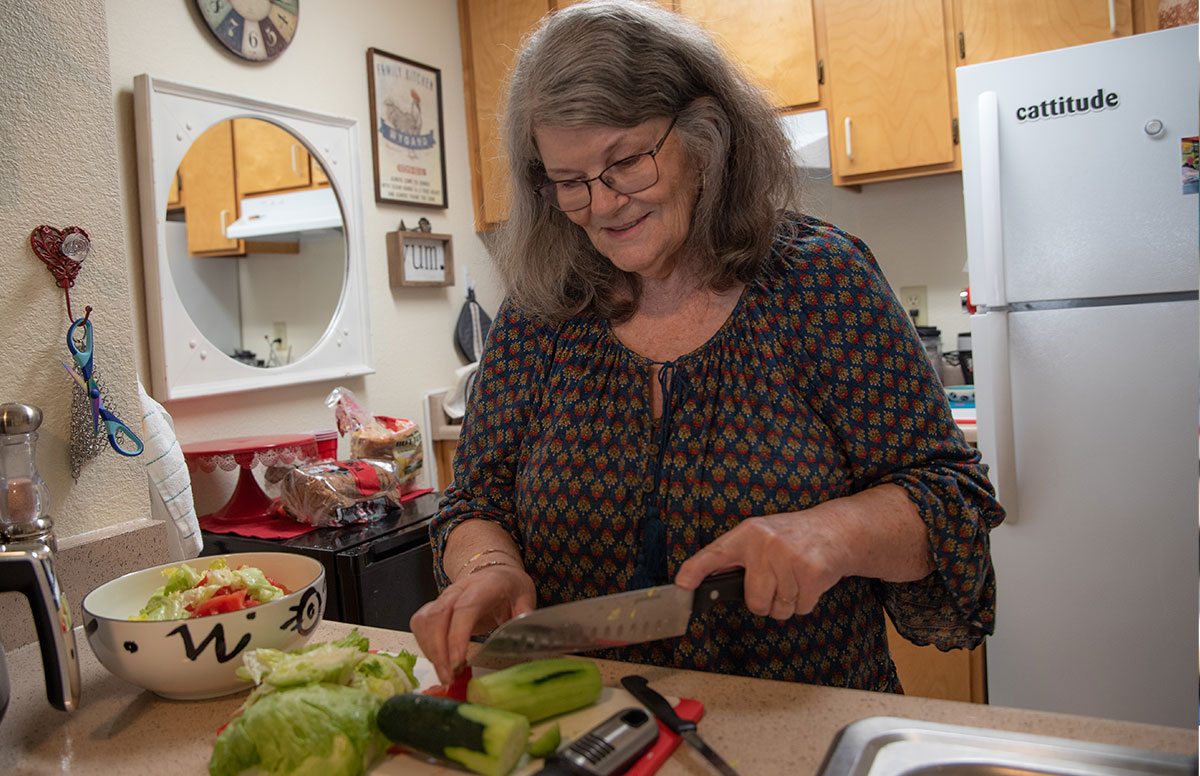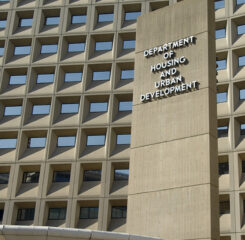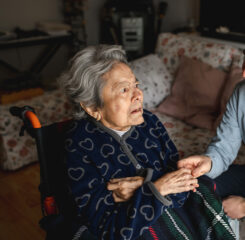FY2024 Hospice Wage Index Proposed Rule Summary
Home » FY2024 Hospice Wage Index Proposed Rule Summary
The proposed FY2024 Hospice Wage Index and Payment Rate Update and Hospice Quality Reporting Requirements was released on the Federal Register public inspection site on March 31 and is scheduled for publication in the Federal Register on April 4.
This summary is not exhaustive; we encourage members to read the whole rule. The page numbers referenced in this summary refer to the public inspection copy of the rule linked here. The fact sheet for the proposed rule is available here.
LeadingAge will convene members in at the April 11 meeting of the Hospice Member Network to discuss the rule and formulate comments. Join the Network here or email Katy Barnett.
FY 2024 Routine Annual Rate Setting Changes (Pages 41-51)
The proposed hospice payment update percentage for FY 2024 is 2.8 percent. This accounts for a 3.0% market basket update and a .02% productivity adjustment (please see the rule for the SIA budget neutrality factor, the wage index standardization factor, and labor share standardization factor). These rates are for hospices that submit their required quality data.
| Code | Description | FY 2023 Payment Rates | Proposed FY 2024 Hospice Payment
Update |
Proposed FY 2024 Payment Rates |
| 651 | Routine Home Care (days 1-60) | $211.34 | 1.028 | $217.74 |
| 651 | Routine Home Care (days 61+) | $167.00 | 1.028 | $171.86 |
| 652 | Continuous Home Care Full Rate = 24 hours of care | $1,522.04 ($63.42 per hour) | 1.028 | $1,561.53 ($65.06 per hour) |
| 655 | Inpatient Respite Care | $492.10 | 1.028 | $506.38 |
| 656 | General Inpatient Care | $1,110.76 | 1.028 | $1,142.20 |
These proposed FY 2024 rates are NOT for hospices that do not submit the required quality data. The FY 2024 annual payment update (APU) that is based on calendar year (CY) 2022 quality data. Hospices that did not submit data would be updated by the proposed FY 2024 hospice payment update percentage of 2.8 percent minus 4 percentage points.
The proposed hospice cap for FY2024 cap year is $33,396.55, which is equal to the FY 2023 cap amount ($32,486.92) updated by the proposed FY 2023 hospice payment update percentage of 2.8 percent. This will also mark the first year of implementation for the 5% wage adjustment cap.
The proposed hospice wage index application for FY 2023 (October 1, 2022 through September 30, 2023) is available on CMS’ website at: www.cms.gov/Medicare/Medicare-Fee-for-Service-Payment/Hospice/Hospice-Wage-Index.html
LeadingAge will asks members for comments on the market basket update and if, as we anticipate, members believe that 2.8% is not a sufficient update, we ask that you share examples of costs with us so that we can make the case for a larger update.
Conforming Regulations Text Revisions for Telehealth
CMS proposes to revise the regulations text at in accordance with the Consolidated Appropriations Act of 2023 which extends the provision of face-to-face re-certifications through telehealth through December 31, 2024. Additionally, they propose to retroactively remove interim regulations regarding patients receiving routine home care via telecommunications. If finalized, the interim rules removed around routine home care would be retroactive to May 12, 2023. The proposals are written as follows:
- Revise § 418.22(a)(4)(ii), which outlines the certification of terminal illness requirements. We propose to add “or through December 31, 2024, whichever is later” after “During a Public Health Emergency, as defined in § 400.200 of this chapter.”
- Revise § 418.204, to remove paragraph (d) to eliminate the use of technology in furnishing services during a PHE.
LeadingAge partnered with other national stakeholders to send a letter to Centers for Medicare & Medicaid Services (CMS) last week asking for written confirmation that hospices can revert to pre-pandemic policies around telehealth utilization during routine home care visits.
Unfortunately, these proposed changes do not provide clarification on CMS’ policy around the flexibilities for counting routine telehealth home care visits as visits that were allowed during the pandemic, as they will end on May 11 with the Public Health Emergency (PHE).
Hospice Utilization (Pages 18-34)
In this rule, CMS provided updates on hospice utilization and spending patterns as they have done in previous years. This year, the culmination of the statistical analysis led CMS to propose a request for information detailed below. The analysis of utilization measures included Medicare spending; level of care utilization; lengths of stay; live discharge rates; as well as services used outside of the hospice benefit while a patient is under a hospice election. This summary is not exhaustive, we encourage members to review in detail the data shared with stakeholders in this proposed rule.
General Hospice Utilization Trends
- The number of Medicare beneficiaries receiving hospice services has grown from 715,349 in Federal FY2003 to over 1.7 million in FY2022
- Medicare hospice expenditures have risen from $5 billion in FY 2003 to approximately $23 billion in FY2022
- CMS’ Office of the Actuary expects aggregate hospice expenditures will continue to increase by approximately 9.1 percent annually
- Medicare decedents who died while receiving hospice increased from FY2013 to FY2019, but then slowly declined from FY2019 through FY2022
- In FY2022, approximately 74 percent (4,204 out of 5,689) of hospices were for-profit and approximately 16 percent (897 out of 5,689) were non-profit
- In FY2022, for-profit hospices provided approximately 64 percent of all hospice days while non-profit hospices provided approximately 27 percent of all hospice days, “Other”, “Government”, or had an unknown ownership status accounted for the remaining 9 percent of hospice days
- Neurological and organ-based failure conditions remain the top-reported principal diagnoses across all hospices regardless of ownership type
Hospice Utilization by Level of Care
- Routine Home Care (RHC) consistently represents the highest percentage of total hospice days as well as the highest percentage of total hospice payments
- In FY2020, CMS rebased the payment rates for CHC, IRC, and GIP however, despite rebasing payment rates for the higher levels of care, there still remains a high percentage of hospices that provide little to no CHC, IRC, or GIP
- For-profit hospices make up 82.9 percent of the hospices that do not provide GIP in a given FY and 84.3 percent of the hospices that do not provide IRC in a given FY
- For-profit hospices make up 68.5 percent of the hospices that provide CHC in a given FY, indicating for-profit hospices are more likely to provide CHC compared to other ownership types
- The bottom 25 percent of hospices, which are the smallest from FY2019 through FY2022, make-up 40.6 percent of hospices that do not provide GIP in a given FY, 50.8 percent of the hospices that do not provide IRC in a given FY, and 27.7 percent of the hospices that do not provide CHC in a given FY
Trends in Hospice Length of Stay and Live Discharges
- Patients with neurological and organ-based failure conditions (with the exception of kidney disease/kidney failure) tend to have much longer lengths of stay compared to patients with cancer diagnoses
- From FY2013 through FY2022, the average live discharge rate has been approximately 17 percent per year
- Of the live discharges in FY2022, 35 percent were because of revocations, 36 percent were because the beneficiary was determined to no longer be terminally ill, 14.2 percent were because beneficiaries moved out of the service area without transferring hospices, and 12.9 percent were because beneficiaries transferred to another hospice, 1.9 percent were discharged for cause
- Non- profit hospices have live discharge rates of approximately 12 percent per year, for-profit hospices have approximately 21-22 percent of live discharges per year, and government/other types of hospices have live discharge rates of approximately 15 percent per year
- In FY2019 through FY2022, the majority of live discharges occur in the first 30 days of hospice care and after 180 days of hospice care
- These live discharges intervals was relatively constant from FY 2019 to FY 2022; 25 percent of live discharges occurred within 30 days of the start of hospice care, and approximately 33 percent occurred after a length of stay over 180 days of hospice care
Non-Hospice Spending During Hospice Election
- Medicare paid over $1.4 billion in non-hospice spending during a hospice election in FY 2022 (or a 28.9 percent increase)
- In FY 2022, the total beneficiary cost sharing amount for beneficiaries electing the hospice benefit was $197 million for Parts A and B
- For-profit hospices had, on average, 60 percent higher non-hospice spending per day compared to beneficiaries under non-profit hospice care
- From FY2019 to FY2020, non-hospice spending related to skilled nursing facilities (SNFs) increase by 323 percent and then increased another 49 percent between FY2020 and FY2021
- From FY2019 to FY2020, non-hospice spending related to skilled nursing facilities (SNFs) increase by 323 percent and then increased another 49 percent between FY2020 and FY2021 – but this has since declined
- non-hospice spending for Part D drugs increased in from $493 million in FY2019 to $623 million in FY2022
- There has been an increase in hospice beneficiaries filling prescriptions for a separate category of drugs CMS refers to as maintenance drugs (beta blockers, calcium channel blockers, corticosteroids, and insulin) which do not require a Prior Authorization.
Hospice and End-Stage Renal Disease
- Hospice enrollment for Medicare beneficiaries receiving maintenance dialysis for ESRD occurs less than half as often and much closer to the time of death, compared to the general Medicare population
- Hospice enrolled ESRD patients accounted for 85,763 beneficiaries with both hospice and ESRD service claims in the 30 days before death and they make up just 27.5 percent of the 311,336 beneficiaries with ESRD services in the 30 days before death
- Looking at those beneficiaries who began hospice within 14 days of their last ESRD claim, CMS found that the average number of days between the last date of the ESRD service and their day of death is 15.2 days. The median is 11 days and 95 percent of beneficiaries have 31 or fewer days between their last date of ESRD service and their day of death
Request for Information on Hospice Utilization (Pages 34-39)
In the rule, CMS raises concerns about the persistent decreases in the use of higher level of care (LOC) despite the rebasing in the FY2020 rule. CMS also expresses concern about the lack of hospice payment for palliative treatments that they should believe be covered under the hospice benefit, like dialysis, chemotherapy and radiation. The findings in the hospice utilization trends serve as a call to action for CMS to address issues related to quality care and access when striving to improve health equity. CMS is soliciting public comment on the following questions:
- Are there any enrollment policies for hospices that may be perceived as restrictive to those beneficiaries that may require higher cost end of life palliative care, such as blood transfusions, chemotherapy, radiation, or dialysis?
- Are there any enrollment policies for hospices that may be perceived as restrictive to those beneficiaries that may require higher intensity levels of hospice care?
- What continued education efforts do hospices take to understand the distinction between curative treatment and complex palliative treatment for services such as chemotherapy, radiation, dialysis, and blood transfusions as it relates to beneficiary eligibility under the hospice benefit? How is that information shared with patients at the time of election and throughout hospice service?
- Although the previously referenced analysis did not identify the cause for lower utilization of complex palliative treatments and/or higher intensity levels of hospice care, do the costs incurred with providing these services correlate to financial risks associated with enrolling such hospice patients?
- What are the overall barriers to providing higher intensity levels of hospice care and/or complex palliative treatments for eligible Medicare beneficiaries (for example, are there issues related to established formal partnerships with general inpatient/inpatient respite care facilities)? What steps, if any, can hospice providers or CMS take to address these barriers?
- What are reasons why non-hospice spending is growing for beneficiaries who elect hospice? What are ways to ensure that hospice is appropriately covering services under the benefit?
- What additional information should CMS or the hospice be required to provide the family/patient about what is and is not covered under the hospice benefit and how should that information be communicated?
- Are patients requesting the Patient Notification of Hospice Non-Covered Items, Services, and Drugs? Should this information be provided to all prospective patients at the time of hospice election or as part of the care plan?
- Should information about hospice staffing levels, frequency of hospice staff encounters, or utilization of higher LOC be provided to help patients and their caregivers make informed decisions about hospice selection? Through what mechanisms?
- The analysis included in this proposed rule shows increased overall non-hospice spending for Part D drugs for beneficiaries under a hospice election. What are tools to ensure that hospice is appropriately covering prescription drugs related to terminal illnesses and related conditions, besides prior authorization and the hospice election statement addendum?
- Given some of the differences between for-profit and not-for-profit utilization and spending patterns highlighted in this proposed rule, how can CMS improve transparency around ownership trends? For example, what and how should CMS publicly provide information around hospice ownership? Would this information be helpful for beneficiaries seeking to select a hospice for end of life care?
CMS hopes the information gathered under this RFI would help to improve the continuum of care under the hospice benefit by: (1) heightened patient and family satisfaction; (2) improvement in quality indicators; (3) lower rates of hospitalization (to include decreased intensive care unit admission and invasive procedures at the end of life); and (4) significantly lower health care expenditures at the end of life. LeadingAge sees alignment between this RFI and our hospice reform proposals and looks forward to using our ideas to respond to this RFI.
Request for Information on Health Equity Under the Hospice Benefit (Pages 39-41)
When CMS requested information last year on health equity measure development, they found great value in the comments for consideration. This year CMS goes a step further with another RFI on development of activities to improve health equity.
- What efforts do hospices employ to measure impact on health equity?
- What factors do hospices observe that influence beneficiaries in electing and accessing hospice care?
- What geographical area indices, beyond urban/rural, can CMS use to assess disparities in hospice?
- What information can CMS collect and share to help hospices serve vulnerable and underserved populations and address barriers to access?
- What sociodemographic and SDOH data should be collected and used to effectively evaluate health equity in hospice settings?
- What are feasible and best practice approaches for the capture and analysis of data related to health equity?
- What barriers do hospices face in collecting information on SDOH and race and ethnicity? What is needed to overcome those barriers?
Hospice Quality Reporting Program (HQRP)
Hospice Outcomes and Patient Evaluation (HOPE) Tool (Pages 55-57)
CMS plans to provide additional information regarding HOPE testing results on the HQRP website in late Spring of 2023. CMS has a dedicated email account, HospiceAssessment@cms.hhs.gov, for comments about HOPE. They plan to use the field test results to create a final version of HOPE to propose in future rulemaking for national implementation.
Future Quality Measure Development (Pages 57-58)
CMS intends to develop several quality measures based on information collected by HOPE when it is implemented. Currently, CMS intends to develop at least two HOPE-based process and outcome quality measures: (1) Timely Reassessment of Pain Impact; and (2) Timely Reassessment of Non-Pain Symptom Impact.
Additional information about CMS’s HOPE-based measure development efforts is available in the 2021 technical expert panel (TEP) Summary Reports and the 2021 Information Gathering Report, available at: https://www.cms.gov/Medicare/Quality-Initiatives-PatientAssessment-Instruments/Hospice-Quality-Reporting/Hospice-QRP-Provider-EngagementOpportunities.
Health Equity Update for HQRP (Pages 58-63)
In FY2023 Hospice Payment Rate Update proposed rule, CMS included an RFI on hospices’ current health equity activities and future approaches to advancing health equity in hospice. Specifically, the FY2023 RFI looked at the development of a structural composite quality measure for hospices.
In 2022, CMS initiated a technical expert panel (TEP) to review potential quality measure development for home health and hospice. Specifically, the TEP assessed the face validity and feasibility of the potential structural . The TEP also provided input on . TEP members also had the opportunity to provide ideas for additional health equity measure concepts or approaches to addressing health equity in hospice and home health settings. A summary of the Home Health & Hospice Health Equity TEP meetings and final TEP recommendations will be available in 2023.
Additionally, to further the goals of the CMS National Quality Strategy (NQS), CMS leaders from across the Agency have come together to move towards a building-block approach to streamline quality measures across CMS quality programs for the adult and pediatric populations. This “Universal Foundation” of quality measure will focus provider attention, reduce burden, identify disparities in care, prioritize development of interoperable, digital quality measures, allow for cross-comparisons across programs, and help identify measurement gaps. To learn more regarding the impact and next steps of the Universal Foundation, read the recent publication of “Aligning Quality Measures Across CMS – the Universal Foundation” in the New England Journal of Medicine at https://www.nejm.org/doi/pdf/10.1056/NEJMp2215539.
Finally, one consideration CMS is pursuing around expanded health equity measurement is including social determinants of health into our quality measures and data stratification. By looking at measure results for different populations separately, CMS and providers can see how care outcomes may differ between certain patient populations in a way that would not be apparent from an overall score (i.e., a score averaged over all beneficiaries). CMS is also taking into consideration the health equity measures used in other health care provider settings through SDOH assessment items including Post-Acute Care Settings like home health and skilled nursing.
For interested stakeholders, there are multiple current opportunities to provide feedback to health equity across the government including:
- Initial Proposals for Updating OMB’s Race and Ethnicity Statistical Standards, 88 FR 5375; and
- Office of the National Coordinator for Health IT (ONC) welcomes input on data classes and data elements for future versions of the United States Core Data for Interoperability (USCDI) – a standardized set of health data classes and constituent data elements for nationwide, interoperable health information .
CAHPS Hospice Survey Mode Experiment (Pages 63-65)
In the FY2023 proposed rule, CMS provided information on a mode experiment they conducted in 2021 to improve response rates on the CAHPS hospice survey. While CMS is not proposing changes in this rule, potential measure changes will be submitted to the Measures Under Consideration (MUC) process in 2023 and may be proposed in future rulemaking. LeadingAge has a representative which serves on the MUC and will ensure member voices are heard on any changes. The experiment tested:
- A web-mail mode (email invitation to a web survey, with mail follow-up to nonresponders).
- A revised survey version, which is shorter and simpler than the current survey, and includes new questions on topics suggested by stakeholders.
- Modifications to survey administration protocols designed to improve overall response rates, such as a prenotification letter and extended field period.
The information received on the CAHPS Hospice Survey Mode Experiment CMS conducted in 2021, resulted in the following findings:
- Response rates to the revised survey were 35.1 percent in mail only mode, 31.5 percent in telephone only mode, 45.3 percent in mail-telephone, and 39.7 percent in web-mail mode;
- Response rates to web-mail mode were similar to mail only mode for those without email addresses (35.2 percent vs. 34.4 percent), but 13 percentage points higher for those with email addresses (49.6 percent vs. 36.7 percent);
- Response rates to mail-only administration of the revised and current survey were similar (35.1 percent vs. 34.2 percent);
- Mailing of a prenotification letter resulted in an increased response rate of 2.4 percentage points;
- Extending the field period to 49 days (from the current 42 days) resulted in an increased response rate of 2.5 percentage points in the mail only mode.
In addition, the following changes were tested as part of the revised CAHPS Hospice Survey:
- Removal of one survey item regarding confusing or contradictory information from the Hospice Team Communication measure;
- Replacement of the multi-item Getting Hospice Care Training measure with a new, one-item summary measure;
- Addition of a new, two-item Care Preferences measure;
- Simplified wording to component items in the Hospice Team Communication, Getting Timely Care, and Treating Family Member with Respect measures
Codifying Hospice Data Submission (Pages 67-70)
CMS proposes to codify data completeness thresholds at § 418.312(j)(1) for measures data collected using the HIS or a successor instrument. Under this section, they propose to codify requirements that hospices must meet or exceed a data submission threshold set at 90 percent of all required HIS or successor instrument records within 30 days of the event (that is, patient’s admission or discharge) and submit the data through the CMS designated data submission systems. This threshold would apply to all HIS or successor instrument-based measures and data elements adopted into HQRP.
CMS also proposes to codify § 418.312(j)(2) that a hospice must meet or exceed this threshold to avoid receiving a 4-percentage point reduction to its annual payment update for a given FY as codified at § 418.306(b)(2).
CMS invites public comment on the proposal to codify in regulations text the HQRP data completion thresholds at § 418.312(j) for measures and standardized patient assessment elements collected using the HIS or successor instrument and compliance threshold to avoid receiving 4 percentage point reduction as described under § 412.306(b)(2).
Establishing Hospice Survey and Enforcement Procedures (Pages 70-72)
CMS previously finalized all the Consolidated Appropriations Act of 2021 provisions for hospice survey enforcement and other activities except for the special focus program (SFP) in the CY2022 Home Health Prospective Payment System (HH PPS) final rule. In the FY2023 hospice proposed rule, CMS announced their intention to create a Technical Expert Panel to provide input on the strucure and methodology of the SFP. The TEP was convened in fall of 2022. The final TEP feedback will be publicly available on the CMS website in April 2023. Accordingly, CMS plans to include a proposal implementing an SFP in the CY2024 Home Health Prospective Payment Update Rate proposed rule.
Proposals Regarding Hospice Ordering/Certifying Physician (Pages 72-79)
CMS proposes to require physicians who order or certify hospice services for Medicare beneficiaries to be enrolled in or validly opted-out of Medicare as a prerequisite for the payment of the hospice service in question. CMS proposed this change in previous comment and rule making March 1, 2016 but did not finalize revisions due partly to the a number of comments expressing concerns about the burden involved in enrolling in Medicare. However, this did not negate the statutory authority CMS has to implement an enrollment/opt-out requirement for hospices.
Citing reports from the Office of Inspector General, “Vulnerabilities in the Medicare Hospice Program Affect Quality Care and Program Integrity” (OEI-02-16-00570), and the Government Accountability Office, “Medicare Hospice Care: Opportunities Exist to Strengthen CMS Oversight of Hospice Providers” (GAO-20-10), CMS proposes to again make changes to § 424.507(b)(1) in this proposed rule. CMS believes these changes would be significantly less burdensome on health care providers and suppliers than the original March 1, 2016 proposal because they would only impact one additional provider/supplier type. Moreover, many hospice certifying physicians are already enrolled in Medicare or have validly opted-out, meaning that they need take no action should our proposal be finalized, thus further reducing the burden on the hospice physician community. We will be asking LeadingAge members to let us know if these assertions are correct as we formulate our comments. CMS seeks comment on the following proposed changes:
- 424.507(b) is “Conditions for payment of claims for covered home health services”. CMS proposes this change: “Conditions for payment of claims for covered home health and hospice services”
- 424.507(b) reads: “To receive payment for covered Part A or Part B home health services, a provider’s home health services claim must meet all of the following requirements:”. CMS proposes to revise this to state: “To receive payment for covered Part A or Part B home health services or for covered hospice services, a provider’s home health or hospice services claim must meet all of the following requirements:”.
- 424.507(b)(1) states: “The ordering/certifying physician, or the ordering/certifying physician assistant, nurse practitioner, or clinical nurse specialist working in accordance with State law…..”.
- Under 42 CFR 418.22(b), only a physician (which can include the hospice’s medical director) can certify that the beneficiary is terminally ill.
- CMS proposes to revise the beginning of § 424.507(b)(1) to state: “The ordering/certifying physician for hospice or home health services, or, for home health services, the ordering/certifying physician assistant, nurse practitioner, or clinical nurse specialist working in accordance with State law…..”.
- This would help clarify that § 424.507(b)(1) should not be read to imply that the eligible professionals listed therein can certify the beneficiary’s terminal status.
- 418.22(c)(1)(i) and (ii) state: for the initial 90-day hospice period, the following physicians, respectively, must certify that the beneficiary is terminally ill: (1) the hospice’s medical director or the physician member of the hospice interdisciplinary group; and (2) the individual’s attending physician (who must meet the definition of physician in § 410.20) if the beneficiary has one. For subsequent hospice periods, § 418.22(c)(2) states that only one of the physicians in § 418.22(c)(1)(i) must provide the certification. CMS proposes to add § 424.507(b)(3) the requirements of § 418.22(c) to reflect the requirement that the one physician providing certification must be enrolled in Medicare.
CMS additionally noted other steps taken in the last year in the area of provider enrollment to capture additional information about provider and supplier ownership, including for hospices. In the December 15, 2022 Paperwork Reduction Act submission (87 FR 76626) CMS proposed to revise the Form CMS-855A Medicare provider enrollment application (Medicare Enrollment Application – Institutional Providers; OMB Control No. 0938-0685) to collect from providers/suppliers that complete this form important data such as (but not limited to):
- Requiring the provider/supplier/hospice to specifically identify via a checkbox whether a reported organizational owner is itself owned by another organization or individual.
- Requiring the provider/supplier/hospice to explicitly identify whether a listed organizational owner/manager does or does not fall within the categories of entities listed on the application (e.g., holding company, investment firm, etc.), with “private-equity company” and “real estate investment trust” added to this list of types of organizations.
This information will help CMS better understand the provider/supplier/hospice’s indirect ownership relationships and the types of entities that own it. Moreover, CMS is considering additional provider enrollment measures related to hospice ownership and management as a means of strengthening protections against hospice fraud schemes and to improve transparency. Additionally, in LeadingAge’s program integrity work, we cited instances in which monitoring the physician role, particularly the medical director, would be helpful.

Most Recommended
December 18, 2024
Year-End Package Analysis: Wins, Ins, and Outs for Aging Services
December 10, 2024
4 Top Tech Themes from 2024
January 16, 2025
Pathways for Foreign-Born Workers
November 27, 2024
 Analysis: November 2024 LTC Surveyor Guidance Updates
Analysis: November 2024 LTC Surveyor Guidance Updates
Recently Added
January 16, 2025
HealthTech Features CAST VP Scott Code’s 2025 Tech Predictions
January 16, 2025
HUD Withdraws Two Proposed Rules
January 15, 2025
HUD: FAQs on Flex Cards
January 15, 2025



